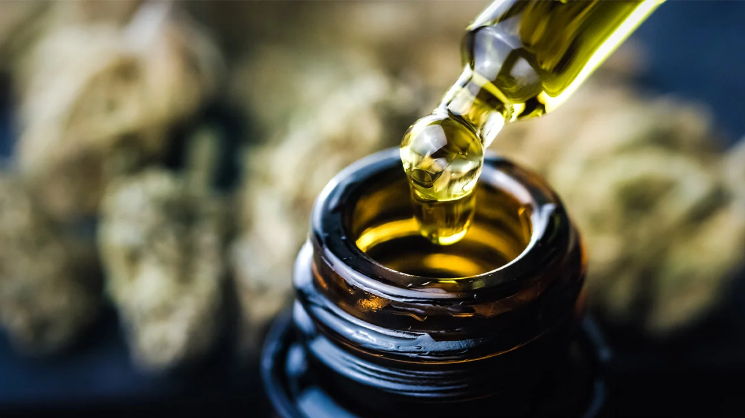Cannabigerol (CBG) oil is gaining recognition as a valuable cannabinoid derived from the cannabis plant, distinct from more well-known cannabinoids like THC (tetrahydrocannabinol) and CBD (cannabidiol). As interest in cannabinoids expands beyond THC and CBD, CBG has emerged for its potential therapeutic benefits and versatile applications. This article delves into the origins of CBG Oil, its chemical structure, interactions within the endocannabinoid system, potential health benefits, extraction methods, legal considerations, and future research directions.
Introduction to CBG Oil
What is CBG?
Cannabigerol (CBG) is often referred to as the “mother cannabinoid” because it serves as a precursor to other cannabinoids during the growth cycle of the cannabis plant. CBG is biosynthesized from cannabigerolic acid (CBGA), a precursor molecule that undergoes enzymatic reactions to produce CBG, THC, CBD, and other cannabinoids as the plant matures. While CBG is present in smaller quantities compared to THC and CBD in mature cannabis plants, selective breeding and advanced extraction techniques have enabled the isolation and concentration of CBG for therapeutic purposes.
Chemical Structure of CBG
Molecular Composition
CBG shares a similar molecular structure with other cannabinoids, consisting of a central phenol ring with a side chain and a cyclohexene ring. The arrangement of atoms and functional groups within CBG determines its interactions with cannabinoid receptors in the body’s endocannabinoid system (ECS), influencing its physiological effects and potential therapeutic benefits.
Interactions with the Endocannabinoid System (ECS)
Role in ECS Regulation
The endocannabinoid system (ECS) is a complex network of cannabinoid receptors (CB1 and CB2), endocannabinoids (produced naturally by the body), and enzymes responsible for synthesizing and degrading cannabinoids. CBG interacts with the ECS by:
- Binding to Cannabinoid Receptors: CBG binds primarily to CB1 and CB2 receptors, influencing neurotransmitter release, immune function, inflammation, and other physiological processes.
- Modulating Enzyme Activity: CBG inhibits the enzyme known as monoacylglycerol lipase (MAGL), which breaks down the endocannabinoid 2-AG (2-arachidonoylglycerol). This inhibition increases 2-AG levels in the body, potentially enhancing ECS signaling and therapeutic effects.
Potential Health Benefits of CBG Oil
Anti-inflammatory Properties
CBG oil exhibits potent anti-inflammatory effects, which may help alleviate inflammation associated with various conditions such as arthritis, inflammatory bowel disease (IBD), and neuroinflammatory disorders. By modulating immune responses and reducing inflammatory cytokines, CBG oil offers a natural alternative for managing chronic inflammation and associated symptoms.
Neuroprotective Effects
Research suggests that CBG possesses neuroprotective properties, protecting against neuronal damage and oxidative stress in the brain. This may have implications for neurodegenerative diseases such as Alzheimer’s and Parkinson’s disease, where inflammation and oxidative stress contribute to disease progression.
Antimicrobial and Antibacterial Activity
CBG demonstrates significant antimicrobial and antibacterial activity against methicillin-resistant Staphylococcus aureus (MRSA) and other drug-resistant bacteria. This makes CBG oil a potential treatment option for infections that are difficult to manage with conventional antibiotics, highlighting its role in combating antimicrobial resistance.
Appetite Stimulation
CBG has been shown to stimulate appetite, which can benefit individuals experiencing appetite loss due to medical conditions or treatments such as chemotherapy. By interacting with cannabinoid receptors involved in appetite regulation, CBG oil offers a natural approach to supporting nutritional intake and overall well-being.
Extraction Methods of CBG Oil
Production Techniques
CBG oil is extracted from cannabis plants or hemp strains bred specifically for higher CBG content. Common extraction methods include:
- CO2 Extraction: Utilizes carbon dioxide under high pressure and temperature to extract cannabinoids and terpenes, yielding a concentrated CBG oil.
- Ethanol Extraction: Involves soaking the plant material in ethanol to extract cannabinoids and other compounds. Ethanol extraction is cost-effective but may result in lower purity compared to CO2 extraction.
- Solvent Extraction: Uses hydrocarbons like butane or propane to extract cannabinoids. Solvent extraction requires careful purification to remove residual solvents and ensure product safety.
Legal Considerations
Regulatory Landscape
The legal status of CBG oil varies depending on regional regulations governing cannabis and hemp-derived products. In many regions, hemp-derived CBG products with minimal THC content are legal for sale and consumption. However, regulations regarding cultivation, extraction, distribution, and product labeling may impact availability and consumer access. It’s essential for individuals to research and comply with local laws when purchasing and using CBG oil products.
Future Research Directions
Emerging Studies
Ongoing research continues to explore the potential therapeutic applications of CBG Oil, focusing on:
- Clinical Trials: Investigating CBG’s efficacy in treating specific medical conditions such as inflammatory disorders, neurodegenerative diseases, and antibiotic-resistant infections.
- Mechanistic Studies: Elucidating CBG’s mechanisms of action within the ECS and its interactions with other biological pathways involved in health and disease.
- Formulation Development: Developing novel CBG oil formulations for enhanced bioavailability, stability, and targeted delivery to optimize therapeutic outcomes.
Conclusion
CBG oil represents a promising frontier in the field of cannabinoids, offering unique therapeutic properties and potential health benefits beyond THC and CBD. From its origins as a precursor cannabinoid to its interactions with the endocannabinoid system (ECS) and diverse physiological effects, CBG oil holds promise for addressing inflammation, neuroprotection, antimicrobial activity, appetite stimulation, and more. As scientific research continues to expand our understanding of CBG’s role in health and disease, CBG oil stands poised to contribute to innovative therapies and natural remedies for a wide range of medical conditions. By exploring its chemical structure, interactions within the ECS, potential health benefits, extraction methods, legal considerations, and future research directions, individuals can gain a deeper appreciation for the therapeutic potential of CBG oil in enhancing overall well-being and quality of life. Embrace the evolution of cannabinoid science and discover the possibilities of CBG oil as a valuable addition to holistic health practices and medical treatments in the modern age.





